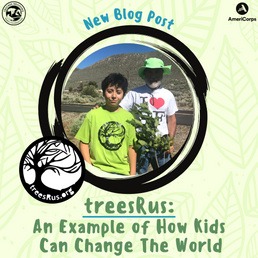Imprints of Animals: What Animals Leave Behind
- Irene Dickinson, Lead Wetland Restoration Technician
- Jan 2, 2023
- 3 min read
Written By: Irene Dickinson

Winter is a hard time for everyone; it’s cold and food resources are scarce, but yet there are still animals that brave this harsh environment. Winter provides a unique resource for humans to see what animals are active with snow. Snow preserves the tracks and paths of creatures enabling us to see certain secrets that are hidden from us during the warmer months.

Just like learning a new language, when it comes to learning and interpreting animal tracks, you must first learn the basics about tracking. Just by looking at a track you can interpret many things about an animal and not just what kind of animal it is. The first term to know is trail: a path or a pattern of tracks. The next terms are straddle: the total width of a trail; register: when the back foot lands where the front foot imprinted, and dragline: a print left by a foot or tail dragging along the surface of the snow.
Interpreting tracks also takes some understanding of animal movement and the animal species that are local to your area. Animals will leave different spaced prints depending on the gaits they use. Different gait examples would be galloping, bounding, or walking. A walking gait is an easy pace where each foot will move independently. Most animals walk but there are some exceptions.

Some animals travel in specific gaits. Rabbits and hares move in bounds or hops. A bound is when the hind feet land in the front tracks or in front of the front foot tracks. Rabbit tracks are easily identified by the single front small print and the double or single long back print (See photo to the right). No other animal track looks like a rabbit’s, making its tracks one of the easier to identify. Another type of gait would be a gallop. A gallop or a lope is the fastest gait for an animal. Usually a horse comes to mind when thinking of galloping but many other animals gallop such as weasels, bears, and many other hoofed animals.
Another key factor in helping to identify tracks is the environment you find the tracks in. It is important to remember what animals live in certain habitats and what animals you would not find in other habitats. The most common places that you can find tracks are snow and mud, which usually is associated with certain animals that remain awake during the winter depending on where you are looking. There are sometimes other signs that are associated with tracks that can further help provide clues to the identity of a track leaver. These signs include feces, hair, feathers, blood, bones, dens, nests, and damaged vegetation. These further signs are useful in piecing together an entire scene that may have happened without ever having seen the event in question.

Why might all of this be useful? Many wildlife biologists use animal tracks and signs to help monitor the health and activity of individual animals and animal groups. Knowing where an animal has been is key in determining where an animal will be. Many hunters use animal tracks to track down animals as well. Just being able to see what goes on when we’re not around is the most exciting part of interpreting animal tracks. Winter may seem like the bleakest time of the year for some, but it provides a unique opportunity to see that life is still there and thriving.
Further Resources for Those Interested: https://www.adfg.alaska.gov/static/education/educators/pdfs/wild_wonders_issue2.pdf
About the Author:

Irene was born and raised in Reno and graduated from Cal Poly Humboldt in 2020 with a degree in Zoology and a minor in Studio Art. She has spent the last few years working in different places across the country such as upstate New York surveying insects for a farmscape ecology program, working with the Entomology Department at the Audubon Insectarium in New Orleans and most recently an Invertebrate Zookeeper for the Toledo Zoo in Ohio. She has a strong passion for lesser loved creatures like invertebrates and reptiles. In her spare time Irene enjoys exploring the local landscape, keeping pet reptiles and invertebrates and making a variety of art. She hopes to teach people to love the unloved and understand their important roles in our ecosystems.













Để trở thành 1 trong những nhà cái hàng đầu châu Á, nhà cái ku11 cũng đã xây dựng 1 hệ thống đẳng cấp và luôn đảm bảo sự uy tín, trách nhiệm
Cakhia TV kênh xem bóng đá 4K có BLV tiếng Việt. CakhiaTV trực tiếp bóng đá Anh, Champion League, La Liga, Serie A, V-League miễn phí chỉ có tại Cà Khịa TV.
U888 là nhà cái hàng đầu trong lĩnh vực cá cược trực tuyến, mang đến sân chơi công bằng, minh bạch và có tính giác cao. Hoạt động hợp pháp và được chứng nhận bởi những tổ chức uy tín
i9BET là một nhà cái trực tuyến đáng tin cậy, được nhiều người yêu thích nhờ chất lượng dịch vụ vượt trội. Với giấy phép hoạt động hợp pháp và hệ thống bảo mật hiện đại.
QQ88 - nhà cái có giấy phép cá cược trực tuyến hợp pháp do Isle of Man và Khu kinh tế Cagayan and Freeport cấp năm 2014. Nhà cái QQ88 cung cấp đa dạng trò chơi trực tuyến như : Cá cược thể thao, Casino trực tuyến, Bắn cá, Nổ hũ, game bài,...
Địa chỉ : 150/21 Huỳnh Văn Bánh, Phường 12, Phú Nhuận, Hồ Chí Minh, Việt Nam
Số điện thoại : 0994175156
Website : https://qq88.ch/
Hastag : #qq88 #qq88ch #qq88link #qq88phattai